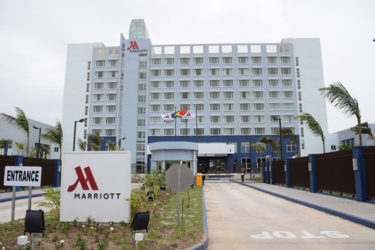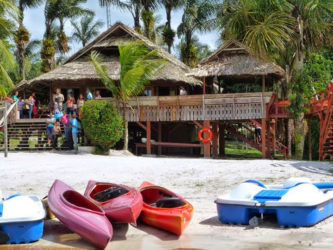Treated well, tourism has an extraordinary contribution to make to regional growth; treated badly it has the capacity to damage economies and reduce government revenues.
In the past twenty years the economic structure of the Caribbean has changed almost beyond recognition. The region has moved from being dominated by an agriculture-dependent preference-based model, involving Government’s constant intervention, to one that to a significant extent has come to rely on an industry that is private sector led.
Put another way, tourism and its continuing ability to compete globally has in all but a few Caribbean nations become an essential provider of employment and national income; and by extension, the taxes that pay for electorates’ expectations of public services from education and health care to roads.

Despite this, and tourism now being accepted as worthy of policy debate, there remains a sense, for reasons of history and culture, that it is in some way less legitimate than other sectors and is apart from the people. It is a view, unfortunately, that is shared by many external development agencies which consequentially have few tourism related programmes, despite the region being the most tourism dependent in the world.
This is disturbing as tourism has come to permeate almost every aspect of the Caribbean economy and is perhaps the only sector that, if nurtured, offers the region the opportunity of sustainable long-term competitive advantage.
That said, the region cannot continue to rely on its reputation as the pre-eminent warm water destination for North Americans and Europeans for much longer. Not only are traveller profiles and requirements changing rapidly in all feeder markets, but much of the Caribbean’s product is looking tired and less competitive.
Jamaica’s Tourism ministers, Wykeham McNeill, and Ed Bartlett and others before them, have recognised that tourism has become a global commodity and an export industry in which other warm water destinations are fighting to increase market share.
A beach in the Caribbean is very little different from a beach in the Seychelles, Mauritius, the Maldives or Mexico; unless, that is, the offering that goes with it in the form of service, cuisine, the hotel, the environment and the overall experience meets or exceeds expectations.
What this means as input costs continue to rise, and in particular taxes on visitors and on the industry, is that high prices cannot be justified unless the visitor has a first class experience and feels that they have received value for money. What price escalation also suggests is that national fiscal strategy ought to better recognise the relative economic contribution of different types of visitors: those who arrive by air, spend more and stay longer, and those who arrive as cruise visitors, who stay for a day or less.

Moreover, the dynamics of the industry continue to change. The pricing policies of large, externally owned hotel chains and of the cruise lines continue to drive down the profitability of domestically owned smaller hotels; viral marketing, search engines and new media have led destinations and properties everywhere to become direct competitors; the Caribbean’s essential prerequisite, airlift, has been contracting; inter-regional tourism has all but collapsed; and the demographic profile of higher spending visitors, particularly from North America, has changed. There are also unspoken issues of crime against tourists and only a slow recognition that the fastest growth in disposable income for travel is now in markets that the Caribbean has been slow to reach out to: Latin America, Russia and China.
The World Travel and Tourism Council (WTTC) recently suggested that Caribbean tourism had created some 2.4m direct and indirect jobs in the region and was contributing in excess of US$9billion annually to GDP. It noted that the industry would only achieve future growth if the emphasis was on long-term planning; there was industry measurement to ensure adequate forecasting; there was region-wide recognition that safety, security and health issues affected the tourism economy as much as the lives of Caribbean citizens; and there was a pressing need to promote linkages to the wider economy.
There is no lack of information about what is required if Caribbean tourism economies are to prosper. It is making change happen that needs to be addressed.




